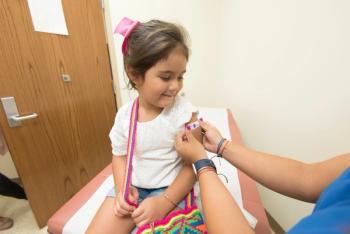
Nearly 10% of Americans with Candidemia have Clostridium difficile Co-infection
The message for clinicians is to be vigilant. Look for candidemia and C. difficile infection occurring together.
A survey of Americans hospitalized for treatment of candidemia has revealed the presence of Clostridium difficile (C. difficile) co-infection in almost 10% of the cases.
Infections caused by C. difficile and Candida species are important healthcare-associated infections. A multistate survey carried out in 2014 by the US Centers for Disease Control and Prevention (CDC) reported C. difficile and Candida in 61 of 504 (12.1%) and 32 of 504 (6.3%) infections, with C. difficile responsible for 70% of all recorded gastrointestinal infections and Candida responsible for 22% of all bloodstream infections. Both infections carry a high mortality rate.
The root of Candida-C. difficile co-infections is antibiotic pressure. Disruption of the gut flora can lead to decreased immunity, which promotes colonization by Candida and the presence of the microbe in the blood (candidemia). C. difficile can also take advantage of the altered gut flora to establish an infection. The 2 infections often occur separately, but they can co-exist. How often that occurs is unclear.
“Our objective was to describe the prevalence and clinical characteristics of candidemia patients with C. difficile co-infection, and to identify potential risk factors for the development of candidemia-C. difficile co-infection in patients with candidemia,” said Sharon Tsay, MD, Mycotic Diseases Branch and Epidemic Intelligence Service, Centers for Disease Control and Prevention, Atlanta, Georgia.
The co-infection was defined as the diagnosis of C. difficile infection within 90 days of the identification of candidemia. The data was from CDC candidemia surveillance surveys from 2014-2016 conducted nationwide as part of the agencies’ Emerging Infections Program. Data collected included demographics, microbiology, underlying medical conditions, healthcare exposures, and death.
Of the 2129 cases of candidemia, 193 (9%) patients were co-infected by C. difficile and 1936 displayed candidemia. About two-thirds of the C. difficile infections were detected prior to candidemia diagnosis (median 10 days before), with the remaining one-third detected a median of 7 days after candidemia diagnosis. Demographically, the co-infected patients were comparable to their counterparts with candidemia alone with respect to age (19-44, 45-64, and ≥65 years of age), sex, and black race.
The similarities between the 2 patients group extended to underlying conditions including liver disease, inflammatory bowel disease, pancreatitis, heme malignancy or stem cell transplantation, and infection with HIV. Differences in underlying conditions between the co-infected and candidemia groups included the prevalence of diabetes (42% vs 31%; OR 1.61, 95% CI 1.19-2.18) and solid organ transplant (6% vs 2%; OR 4.07, 95% CI 2.06-8.07).
Comparison of healthcare exposure revealed difference between the co-infected and candidemia groups concerning hemodialysis (23% vs 12%; OR 2.19, 95% CI 1.52-3.16), prior hospitalization (72% vs 57%; OR 1.89, 95% CI 1.37-2.62), and central venous catheterization (79% vs 69%; OR1.63, 95% CI 1.14-2.33). The groups were comparable concerning the Candida species isolated and the 30-day mortality rate (both 25%).
Multivariate logistic regression analysis revealed 4 risk factors of co-infection: diabetes (OR 1.41, 95% CI 1.03-1.92), solid organ transplant (OR 2.95, 95% CI 1.46-6.00), hemodialysis (OR 1.82, 95% CI 1.24-2.67), and prior hospital stay (OR 1.74, 95% CI 1.26-2.43).
Because the data were collected from case report forms, no other information on the C. difficile infections including treatment was available.
“In patients with C. difficile infection, 1 in 100 developed candidemia. In patients with candidemia, nearly 1 in 10 had C. difficile infection. The message for clinicians is to be vigilant. Look for candidemia and C. difficile infection occurring together. Clinicians should identify patients at greater risk and review best practice for antibiotic prescribing,” said Dr. Tsay.
DISCLOSURES
Sharon Tsay: none
SOURCES
- Photos and tape of presentation
PRESENTATION
Oral Abstract Session: The Fungus Among-us - Clinical Advances
Prevalence of and Factors Associated with Clostridium difficile Co-infection Among Patients with Candidemia, United States, 2014—2016. Sharon Tsay, MD, Mycotic Diseases Branch and Epidemic Intelligence Service, Centers for Disease Control and Prevention, Atlanta, GA.
Brian Hoyle, PhD, is a medical and science writer and editor from Halifax, Nova Scotia, Canada. He has been a full-time freelance writer/editor for over 15 years. Prior to that, he was a research microbiologist and lab manager of a provincial government water testing lab. He can be reached at hoyle@square-rainbow.com.
Newsletter
Stay ahead of emerging infectious disease threats with expert insights and breaking research. Subscribe now to get updates delivered straight to your inbox.
















































































































































































































































































